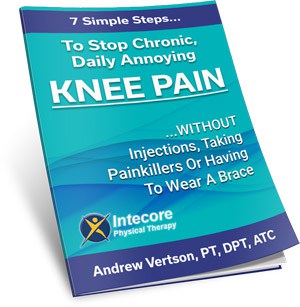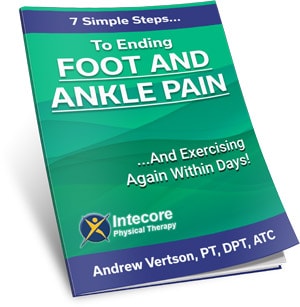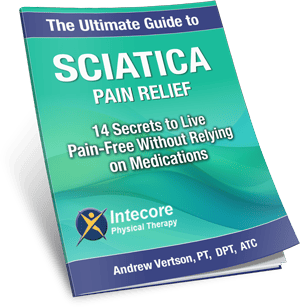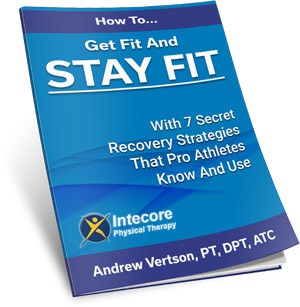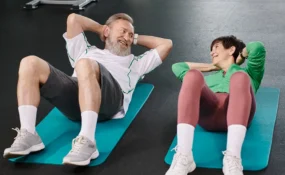
Fitness habits are easy to set but hard to keep, especially if they’re overly ambitious or don’t fit your lifestyle.
The problem with quick-fix resolutions is that they burn out just as fast as they start, leaving you frustrated and back at square one. Sustainable fitness is different. It’s about creating habits that you can stick with, not just for weeks, but for months and years.
When you take a long-term approach, you’re not only more likely to stay consistent—you’re also protecting yourself from injury, building strength gradually, and giving your body the time it needs to adapt and thrive. The key is to start where you are and grow from there.
Here’s how to build an easy plan to stick to your fitness habits…
More Posts Like This From Intecore Physical Therapy:
5 Reasons Why Prioritizing Movement Over Diets and Workouts Leads to Long-Term Health
5 Simple Exercises to Stay Flexible and Strong During the Holidays
What to Wear When You Come For Physical Therapy
Table of Contents
5 Principles for Building Lasting Health and Fitness Habits
1. Start Small and Build Gradually
The biggest mistake most people make when starting a new fitness routine is doing too much, too soon. Instead, focus on small, achievable steps. For example, if you’re new to exercise, commit to a 10-minute walk each day or a short stretching routine. Once you’ve built that habit, you can add more time, intensity, or variety. Progress, not perfection, is the goal.
2. Make It Personal
Not everyone loves running, and that’s okay. The best fitness routine is the one you enjoy and can stick to. If you hate the gym, try yoga, dancing, or hiking. Tailoring your fitness to your preferences and lifestyle makes it easier to stay motivated. If you’re unsure where to start, a physical therapist can help you choose activities that align with your goals and physical needs.
3. Prioritize Consistency Over Intensity
It’s better to move a little every day than to exhaust yourself with intense workouts a few times a month. Consistency builds habits and keeps your body prepared for activity. Aim for 3-4 days of moderate exercise per week, and don’t underestimate the value of simple movements like stretching or walking.
4. Focus on Form, Not Just Effort
Proper form is crucial to avoid injury and maximize results. Whether you’re lifting weights, practicing yoga, or doing bodyweight exercises, focusing on technique ensures you’re targeting the right muscles and protecting your joints. If you’re unsure about your form, a physical therapist can provide expert guidance.
5. Celebrate Progress, Not Perfection
Fitness is a journey, not a race. Celebrate every milestone, no matter how small it seems. Did you walk more steps today than yesterday? Did you feel less stiff after stretching? These wins are signs that you’re moving in the right direction. Acknowledging progress keeps you motivated and focused on the bigger picture.
Overcoming Common Challenges To Healthy Fitness Habits
“I Don’t Have Time”
You don’t need hours to see results. Short bursts of movement—like a 15-minute walk or a quick stretch—can add up over time. Schedule these moments like appointments to ensure they happen.
“I’m Not Motivated”
Motivation comes and goes, but habits are what keep you moving. Set small, achievable goals and remember why you started. A workout buddy or accountability partner can also help keep you on track.
“I’m Worried About Pain or Injury”
If pain or discomfort is holding you back, don’t ignore it. A physical therapist can help identify the root cause and guide you in adapting your routine to stay active safely.
Creating a Routine That Works
Building fitness habits doesn’t have to be complicated. Here’s a simple weekly plan to get you started:
- Monday: 10-15 minutes of stretching or yoga.
- Wednesday: 20-minute brisk walk or light strength training.
- Friday: Low-impact cardio like cycling or swimming.
- Saturday: Outdoor activity—go hiking, play with the kids, or take a dance class.
- Daily: Incorporate light movement like stretching or posture exercises throughout the day.
Adjust this plan to suit your schedule and gradually increase activity as your fitness improves.
Need Some Help With Physical Therapy?
Let our physical therapy team help you find the best ways to incorporate movement into your life and make it a long-term habit! Contact us today and we’ll help you make a plan tailored to you. You can also give us a call here: 949-597-2103
- 7 Ways to Get Rid of Tension Headaches Naturally - July 1, 2025
- Why Are My Feet Swollen? Common Causes Explained - June 2, 2025
- What Is Restless Leg Syndrome? Symptoms, Causes, and Relief Options - May 5, 2025







